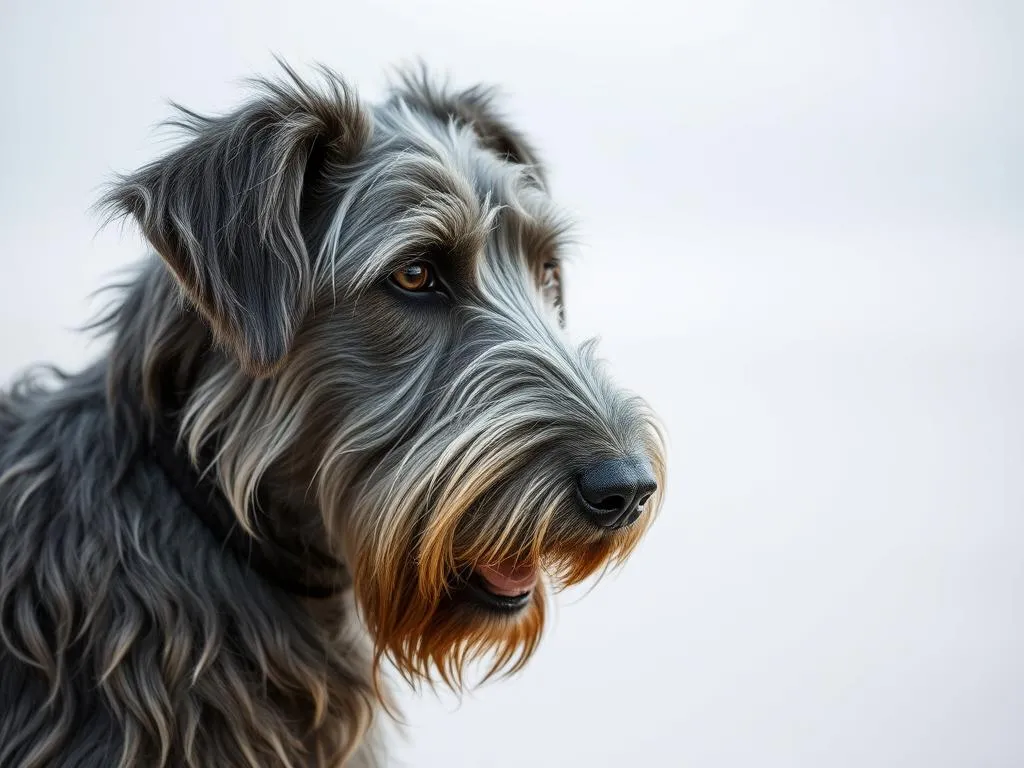
Understanding different dog breeds is essential for anyone considering adding a furry friend to their family. Each breed comes with its unique history, physical characteristics, and temperament, making it crucial to choose one that aligns with your lifestyle and preferences. Among the diverse array of breeds, the Irish Wolfhound stands out due to its impressive stature, gentle nature, and rich heritage.
Overview of Dog Breeds
Definition of Dog Breeds
A dog breed is a specific group of domestic dogs that share common characteristics, including physical traits, behavior, and genetics. Breeds are often recognized by kennel clubs and organizations, which establish breed standards that outline the ideal appearance and temperament of each breed. Understanding these distinctions aids potential dog owners in selecting a breed that matches their living situation, lifestyle, and personal preferences.
Purpose of Dog Breeds
Different breeds have developed over time to fulfill various roles, such as working dogs, companion animals, and show dogs. Historically, breeds were often cultivated for specific tasks, like herding sheep, guarding property, or hunting game. This historical significance continues to influence how breeds are perceived and their suitability for specific roles in modern society.
Popularity and Trends in Dog Breeds
In recent years, trends in dog ownership have shifted, with some breeds gaining popularity due to their unique traits or adaptability to urban living. According to the American Kennel Club, breeds like the Irish Wolfhound, while not among the most common, have a dedicated following due to their affectionate nature and majestic appearance.
The Irish Wolfhound: An Introduction
Historical Background
The Irish Wolfhound is one of the oldest dog breeds, believed to have origins dating back to ancient Ireland. These dogs were initially bred for their impressive size and strength, making them exceptional hunters of wolves and deer. Their historical significance is deeply rooted in Irish culture, where they were often gifted to nobility as symbols of status and power. Additionally, the breed features prominently in Irish mythology, where they are often depicted as noble guardians.
Physical Characteristics
The Irish Wolfhound is renowned for its towering height, with males typically standing between 32 to 34 inches at the shoulder and females measuring slightly less. Weighing between 120 to 180 pounds, they are the tallest dog breed, showcasing a powerful build. Their coat is rough and can come in various colors, including brindle, fawn, gray, and black, among others. Distinctive features such as their long legs and deep chest give them a graceful yet formidable appearance.
Temperament and Behavior
General Temperament
The overall temperament of the Irish Wolfhound is gentle and calm. Despite their imposing size, they are known for their affectionate nature and are often described as “gentle giants.” They tend to be friendly, loyal, and protective of their families, making them excellent companions. When compared to other breeds, the Irish Wolfhound’s laid-back demeanor sets them apart, often favoring relaxation over high-energy activities.
Interaction with Families and Children
The Irish Wolfhound is exceptionally suited to family life. Their gentle disposition makes them great with children and other pets. They are known to be patient and tolerant, often forming strong bonds with the younger members of the household. However, due to their size, supervision is advised during playtime to ensure safe interactions.
Training and Socialization
Training an Irish Wolfhound requires patience and consistency. Positive reinforcement methods work best, as these dogs respond well to encouragement and rewards. Early socialization is crucial to help them become well-rounded adults, as exposure to various environments, people, and other animals fosters confidence. Common behavioral issues may include stubbornness or a tendency to chase smaller animals, which can be mitigated through proper training and supervision.
Health and Care
Common Health Issues
Like all breeds, the Irish Wolfhound is predisposed to certain health issues. Common concerns include hip dysplasia, heart problems, and certain types of cancers. Regular veterinary check-ups and preventative care are essential to monitor their health and catch any issues early.
Nutrition and Diet
Proper nutrition is vital for the health of an Irish Wolfhound. Due to their size, they require a diet high in quality protein and essential nutrients. Recommended feeding practices include dividing their daily portions into two or three meals to prevent bloat—a serious condition that can affect large breeds. Consultation with a veterinarian can help determine the best diet plan tailored to your dog’s individual needs.
Exercise Requirements
Although the Irish Wolfhound enjoys short bursts of play, they do not require excessive exercise. Daily walks and moderate playtime are sufficient to keep them healthy and happy. Activities like gentle fetch or leisurely hikes work well for this breed. Mental stimulation is equally important, so incorporating puzzle toys or training exercises can help keep their minds engaged.
Living with an Irish Wolfhound
Ideal Living Conditions
While Irish Wolfhounds are large dogs, they can adapt to various living conditions. Ideally, they thrive in homes with ample space to move around. However, they can also adjust to apartment living as long as they receive regular outdoor exercise. Climate considerations are also important; they can tolerate moderate temperatures but should be protected from extreme heat or cold.
Grooming Needs
Grooming an Irish Wolfhound is relatively straightforward. Their rough coat requires regular brushing to minimize shedding and keep it healthy. Bathing should be done as needed, generally every few months, to maintain cleanliness without stripping natural oils. Additionally, dental care and regular nail trimming are crucial aspects of their grooming routine.
Lifespan and Aging
The average lifespan of an Irish Wolfhound ranges from 6 to 10 years. As they age, they may experience common signs such as decreased energy and mobility. Regular veterinary check-ups become increasingly important to monitor their health and provide appropriate care as they transition into their senior years.
Irish Wolfhound Community and Resources
Breed Clubs and Organizations
Numerous breed clubs and organizations are dedicated to the Irish Wolfhound, offering valuable resources for potential owners. These clubs often provide information on breed standards, health testing, and responsible breeding practices. Engaging with the community can also connect you with other Irish Wolfhound owners for support and shared experiences.
Adoption and Rescue Options
Adopting an Irish Wolfhound can be a rewarding experience. Many breed-specific rescues focus on rehoming dogs in need of a loving family. Adopting a dog not only provides a home to an animal in need but also supports the responsible breeding ethos that many enthusiasts advocate.
Events and Activities
Various events and activities cater to the Irish Wolfhound, including dog shows, competitions, and community gatherings. Participating in these events can enhance your bond with your dog and provide opportunities to meet other Irish Wolfhound owners, share experiences, and deepen your appreciation for the breed.
Conclusion
The Irish Wolfhound is a unique and magnificent breed that combines a rich historical background with a gentle, loving temperament. Their impressive size and calm demeanor make them suitable for families and individuals alike. However, potential owners should carefully consider their living conditions, exercise needs, and grooming requirements before welcoming an Irish Wolfhound into their home. With the right preparation and commitment, an Irish Wolfhound can become a beloved member of your family, bringing joy and companionship for years to come.









